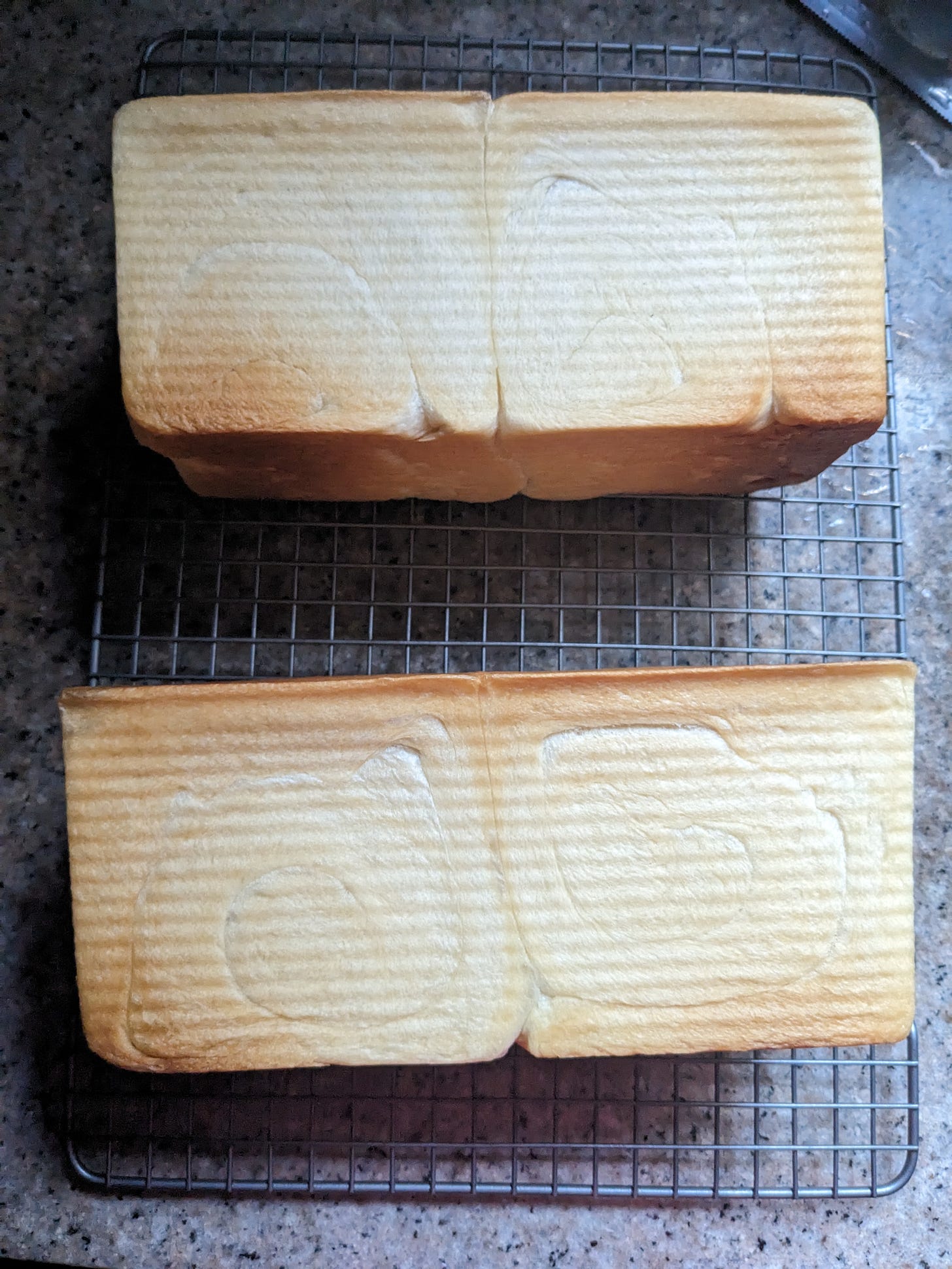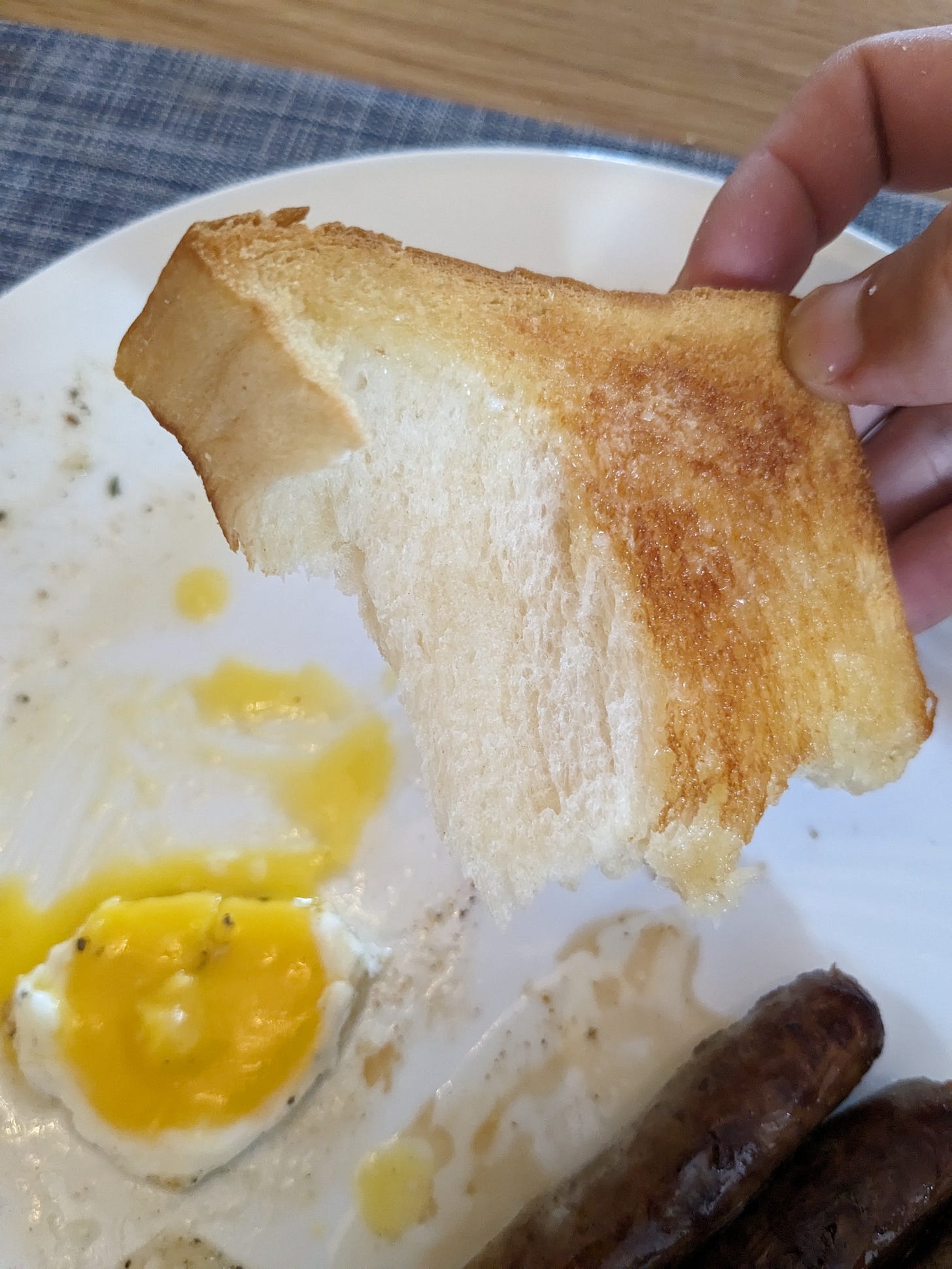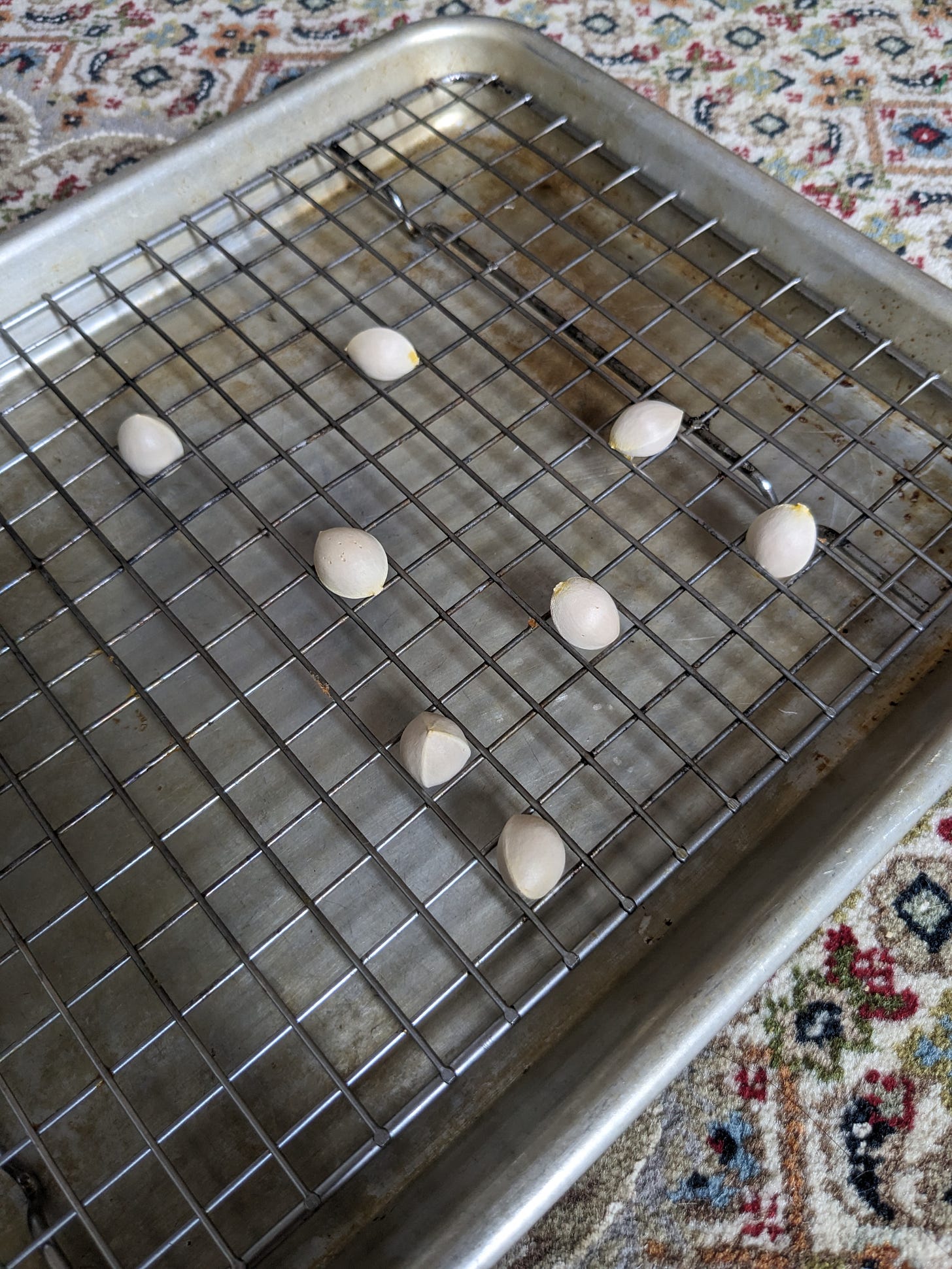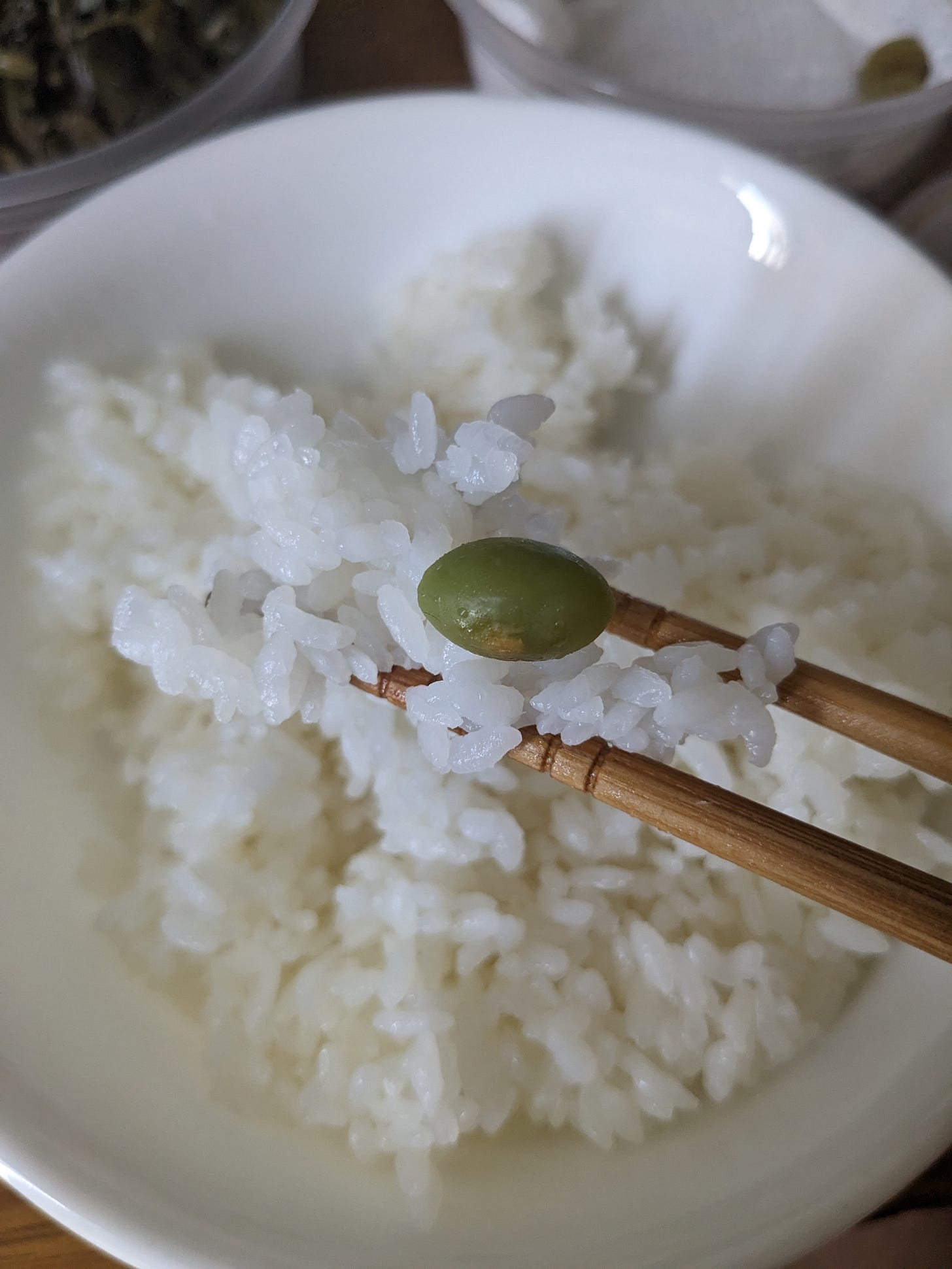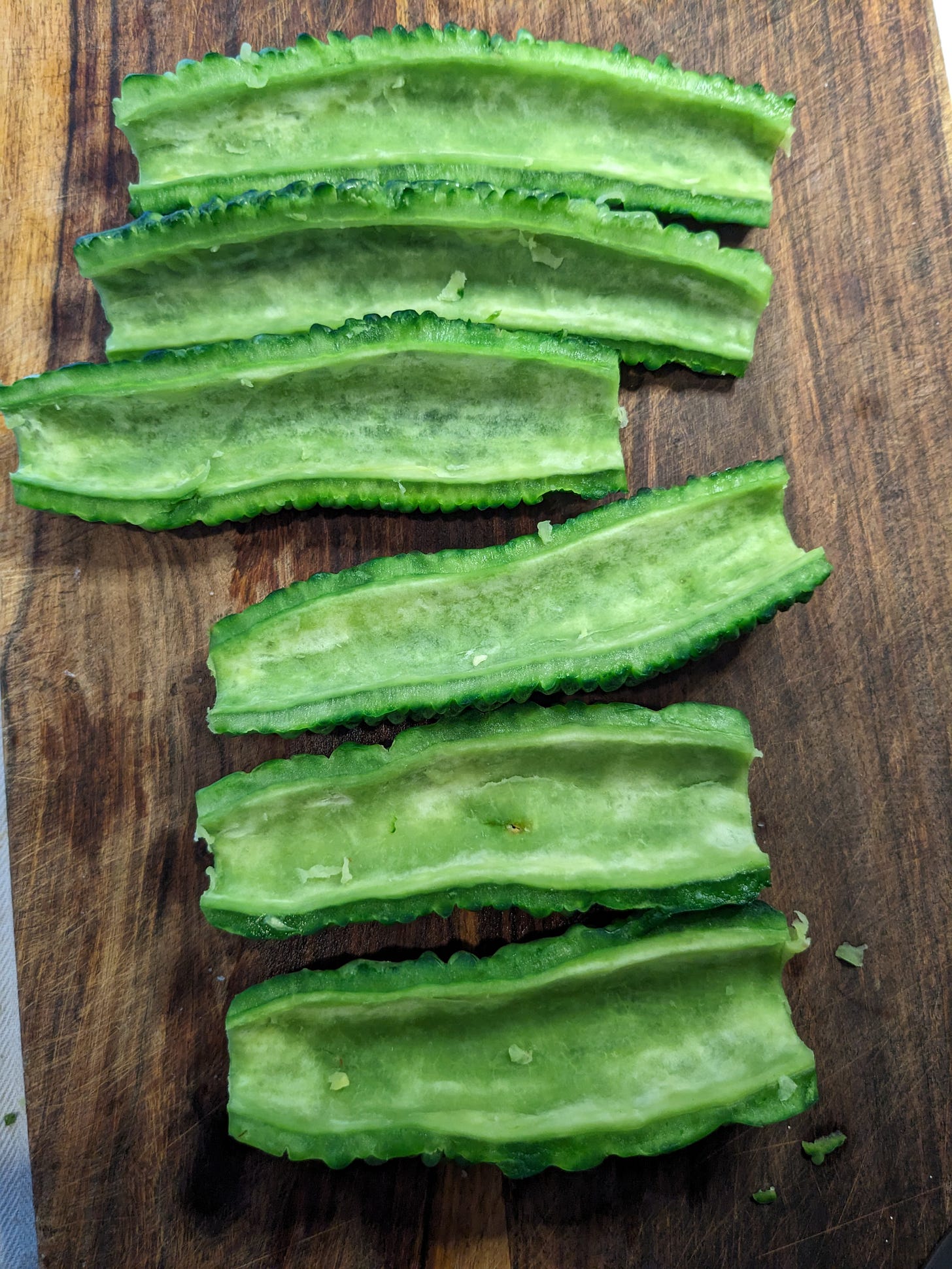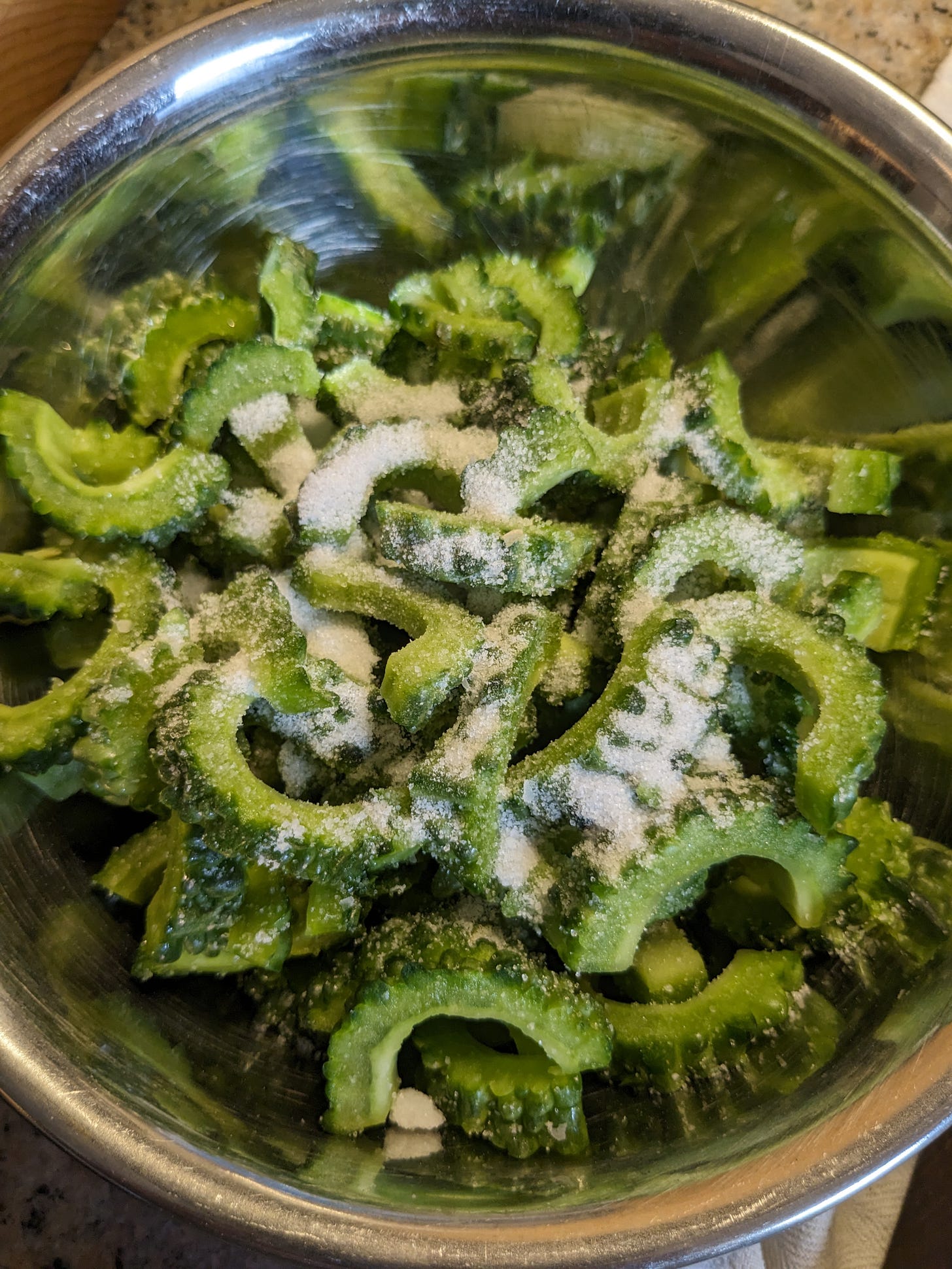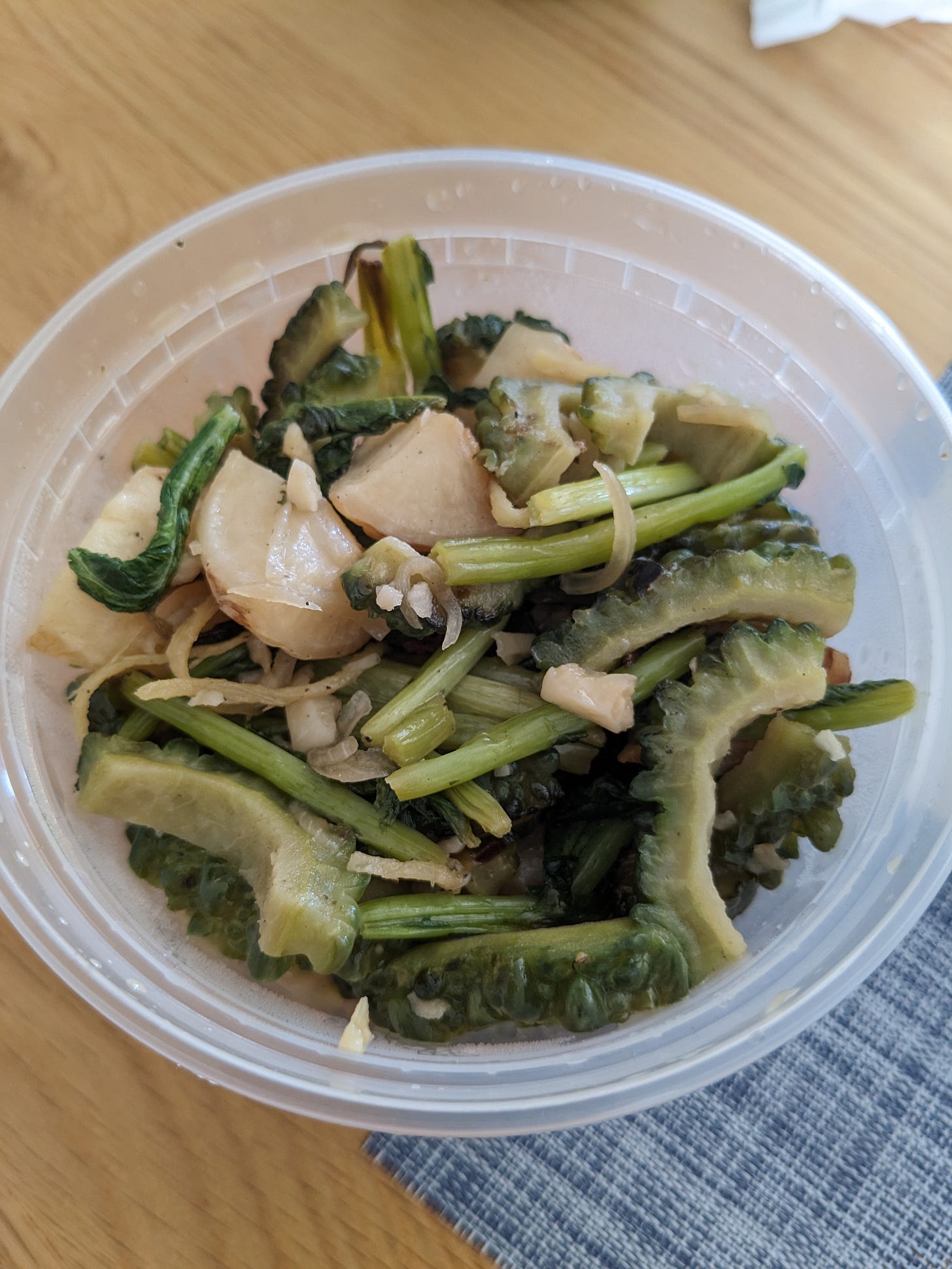Hello!
You’ve received this email because you’ve signed up for noodsletter. Thank you.
If any of you want to send over things you find interesting, or that you think I would find interesting, I encourage you to do so! (Thank you to all who do!)
Today, we’re talking stuff your body doesn’t want you to eat: gingko, bitter melon, bread (jk on this last one)(except if you’re celiac). No links and such this installment, will do a brief(er) update later this week to clear out all the bric-a-brac I’ve collected.
All the recipes ever published in noodsletter have been archived in the very first noodsletter, which you can find here.
Please consider becoming a paid subscriber!
Book Bit
Yes, if joy had been the goal it would have been enough. But joy is not my goal, never has been, what good is joy to me? The family is not my goal either. If it had been, and I could have devoted all my energy to it, we would have had a fantastic time, of that I am sure. We could have lived somewhere in Norway, gone skiing and skating in winter, with packed lunches and a thermos flask in our backpacks, and boating in the summer, swimming, fishing, camping, holidays abroad with other families, we could have kept the house tidy, spent time making good food, being with our friends, we could have been blissfully happy. That may all sound like a caricature, but every day I see families who successfully organize their lives in this way. The children are clean, their clothes nice, the parents are happy and although once in a while they might raise their voices they never stand there like idiots bawling at them. They go on weekend trips, rent cottages in Normandy in the summer, and their fridges are never empty.
From My Struggle: Book 1 by Karl Ove Knausgaard, tr. Don Bartlett
More like my struggle.
Work Things
As ever, we’ve been publishing at a steady clip over at ChefSteps. Here’s a selection of just the recipes since the last time I noted new stuff we’ve put up:
A whole chicken, roasted Seattle-teriyaki-style
And two crazy delicious muffins: Corn and lemon poppy seed
We also published Jonathan Zaragoza’s pollo al carbon recipe, which I made without the carbon (I don’t have a grill so I just roasted it). Even though I burned the skin more than I charred it (the Breville countertop oven’s broiler is a beast), this was very, very tasty, and I am generally anti-whole chicken preparations.
The marinade is also good on chicken parts—for maximum flavor, I suggest butterflying the legs/thighs, then salting them and marinating per the instructions (salt first for at least 45 min, then marinade, preferably uncovered in the fridge), and then roasting them/grilling them as hot as you can until they’re just overdone, around 170-175 degrees F.
I realize we’re not for everyone, but this month marks four years since ChefSteps started Studio Pass. If these sorts of recipes interest you, I humbly ask you to consider signing up—we’ve got a ton of very cool stuff coming up in the next year, including an exclusive product release that’s sort of blowing my mind.
Bread
I’ll start with bread, since I’ve been tinkering with a ChefSteps recipe for shokupan. It works wonderfully as written, but due to some mild yet nevertheless unfortunate food allergies, I skip the eggs and use lactose-free milk, and because I’m cheap, I skip the milk powder. I also have been scaling it up, which, from my experience, seems to require slightly longer kneading times. The key for that feathery crumb is, as with any enriched bread, to get the gluten strong enough to windowpane—you should be able to easily stretch a blob of dough into a taut, thin, almost transparent sheet about 2 inches square.
Of course, the great challenge of all bread, for me, is judging proof, which I struggle with primarily because I forget I’m making bread whenever I make bread. The only reliable method I’ve found to judge proof, both when making sourdough bread and making this bread, is to standardize the procedure as much as is possible (recipes, what a concept!). This is easier to do with commercial yeast than wild yeast, and so long as other conditions, like the ambient temperature of my apartment kitchen and the types of ingredients I use, like commercial bread flour, everything seems to work out well. The best part about this bread is that I can make it during a work day with very little interruption in my work: I prep the dough before starting the day, let it proof, shape it during lunch, and then bake it off just before dinner.
Since this has now become a part of my weekly routine (I make two loaves a week), at some point I’m going to invest in a true shokupan loaf pan (they’re 5 inches tall and wide, rather than the 4-inch standard pullman loaf pan). Anyway, here’s one of the better examples:
Gingko, Let’s Go
Turning leaves, premature sales of Halloween decorations, and pumpkin spice latte ads are all signs the season has turned and fall is upon us, but the true sign of Brooklyn fall for me is the smell of vomit on the sidewalks. Yup, that’s right: It’s gingko time, baby!
If you live here, there’s a street near where you live that smells awful all fall, and that’s where the local gingko tree grows in Brooklyn. Other than the putrid smell, you might recognize the gingko by its trumpet-like leaves, which are very pretty if you can dissociate the leaves from the smell of the fruit, which, again, smells like puke.
If you can get past the smell, and don’t mind being stared at by passersby, you can actually harvest the fruit, process it, and produce gingko nuts, an autumn delicacy for Asians of all stripes; you will likely have to (nicely) fight with older Asian ladies harvesting the fruit. (When I lived on 78th street, I engaged in a little light gingko warfare with my neighbors up the block, making reconnaissance missions early in the morning to pick up the fallen, not yet smushed, fruit before they woke up.)
Unfortunately, because of the several (seriously, just like 3 times) previous occasions I’d prepared gingko nuts at home, my wife is adamantly against the whole idea. When I brought home a small stockpile of 12 gingko fruit to process, she was deeply, deeply unhappy, which was fair enough because I had literally promised never to do it again. However, now I have what passes for a patio in this overpriced city, so I could do most of the most disgusting processing parts “outside.”
I don’t recommend you do any of this, by the way. Gingko are about as toxic a food thing as exists for humans; touching the fruit will make your skin slough off, eating the nuts will cause all sorts of problems if you eat more than three a day. It is, literally, poisonous to us. So why do it at all? Well, gingko nuts are delicious!
They have this gummy-like consistency that’s unique, and they have this nutty-sweet bitterness that no other food possesses. That they’re poisonous makes them all the more delicious, to me, although of course you might feel differently.
You can look up the process online, and there are variations here and there (some say to roast the nuts in a pan, others use an oven—I’ve had better results from a low 250 degree oven than the pan method, for what it’s worth). Basically, the process is this: Remove all the fruit from the gingko nut (use your hands, then soak them, then rinse away all the remaining flesh); let the nuts dry; roast the nuts; peel them. The disgusting smell emanates just from the fruit flesh, so if you want to keep your house as vomit-smell-free as possible, get rid of the flesh and soak the nuts (after soaking, you can really remove all the flesh) and dry them outside. Then you can transfer them inside for final processing; the smell should be less offensive, if not entirely gone.
Eat the processes nuts with white rice, but only three (3) per day. Enjoy!
Bitter Melon
I’ve been buying stuff from the Japanese produce outfit Suzuki Farm since I haven’t been able to make the trek to the farmers’ market at Grand Army Plaza, and as a result I’ve been living XL with bitter melon. I can recall clearly the first time I started liking bitter melon, which was my first visit to the old Mission Chinese Food; their rice cakes with triple-cooked bacon had little slivers of bitter melon. However, I hadn’t really cooked with it at home all that often until the last couple years.
Recently, because Suzuki Farm also sells delicious turnips, I’ve been combining the two, stir-frying the bitter melon with the turnip bulbs and their greens with a little fish sauce, garlic, and lots of black pepper. I’m not sure how wide the appeal is for this vegetable, or for this combination of flavors, but I think it’s incredible: the weirdly super bitter bitter melon, the sweet, starchy turnip bulbs, and the light, peppery, slightly bitter turnip greens. As the shibboleth of Asian-Americans goes: It’s so good.
There’s a lot of techniques out there for taming the bitterness of bitter melon, and I don’t know if any of them really do anything—it’s still plenty bitter after the fact. My current method is more a vibes-based approach than anything else: I slice them in half, scraped out all the seeds and the spongey membranes, slice them thin, then macerate them in salt and sugar, then I blanch them in salted water. Again, at the end, they’re still super bitter, so I’m not sure what if anything all that does in terms of bitterness, but it does get the slices parcooked, which translates to super fast stir-frying.
Cut up the turnips into stir-fryable bits (ditto the washed and spun greens), then fry the turnips until charred, pull them out, add the blanched bitter melon, pop the turnip and their greens back in the wok, add the garlic and black pepper, give it a stir until it smells delicious, then season with salt and fish sauce.
The only thing I am sure of is that bitter melon is way, way more delicious when it’s coated in a lot of flavorful fat and it’s quite salty—this tracks with the Mission Chinese Food preparation. Coated in bacon fat, it’s crazy good, so if you’re making it some other, possibly vegetarian, way, amp up the oil and make it taste good, and salt the heck out of the bitter melon.



